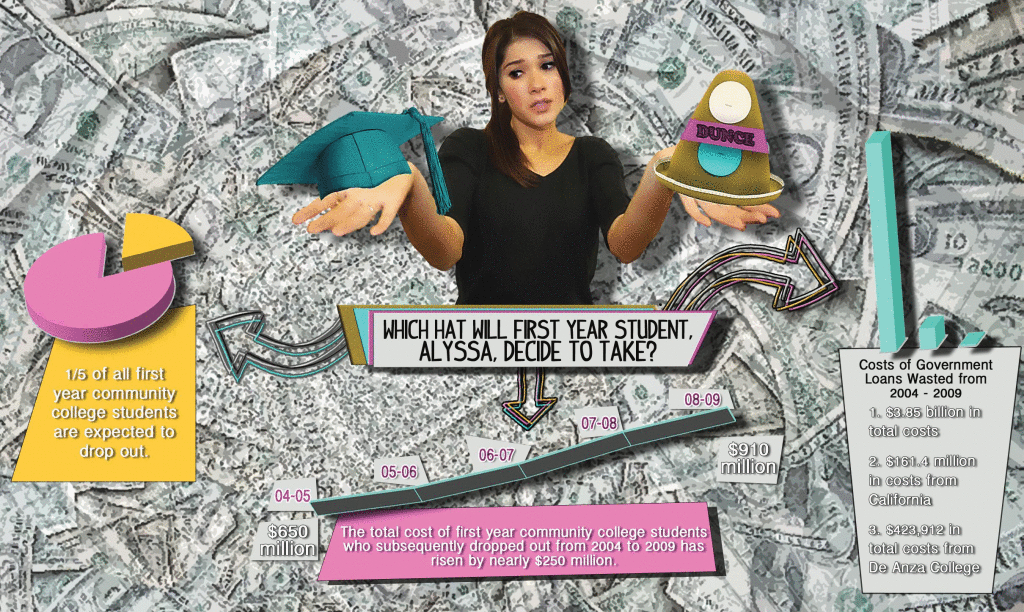
Graphic by Alex Mendiola/LA VOZ WEEKLY
WHICH HAT SHOULD I TAKE? - First year student, Alyssa Dailey, is bored with her remedial courses and has started to lose interest in her classes. She must decide between using the rest of her Pell grant to take classes or drop out to pursue something else.
Nearly $4 billion has been wasted in the past five years on community college students who accepted state and federal grants with the expectation they would transfer to a university or earn an associates degree, only to drop out after their first year.
According to The Hidden Costs of Community Colleges, published Oct. 20 by the American Institutes for Research in Washington D.C., $660 million was spent on appropriations, grants and fee waivers by the federal government for first-year drop-out students during the 2008-2009 school year. $240 million has been spent by state grants, $130 million in California alone. California has spent $340 million in the past five years, and leads nation in wasted grant money.
The study has data only up to the 2008-2009 academic year, but the institute concludes the waste has risen, and will continue to rise as it has for the past five years.
“In the 2007–2008 academic year, Pell grants to first-year community college dropouts soared by about 25 percent from previous years −to about $140 million− increasing by more than 25 percent to $180 million in the 2008-2009 academic year,” states the study.
The study continues that the loss is only an estimate and the figures are imprecise, as the findings do not include part-time students or other government money used to support community colleges. The report states the estimates are not an excuse to delay change.
“Continuing to pump more money and more students into the existing system is not the answer,” acording to the study. “Perhaps the only thing more expensive than fixing this problem is not fixing earn.”
Ideas abound on how best to keep students enrolled, from shorter academic terms and year round tuition to uniforme block schedules allowing students to clearly know their classes start and end times. However, the study highlights what the institute feels is the “most consistently identified” barrier: “Simply put, the current approach to [remedial education] has not worked, leading to calls for new and more effective
